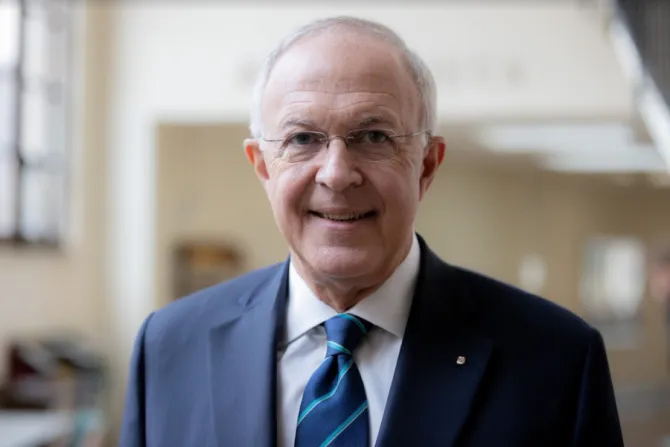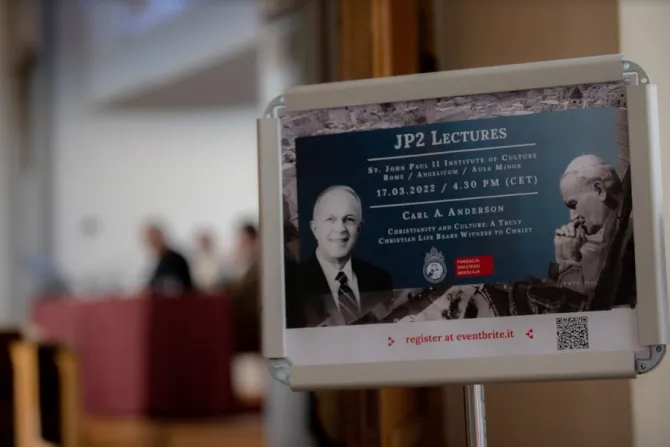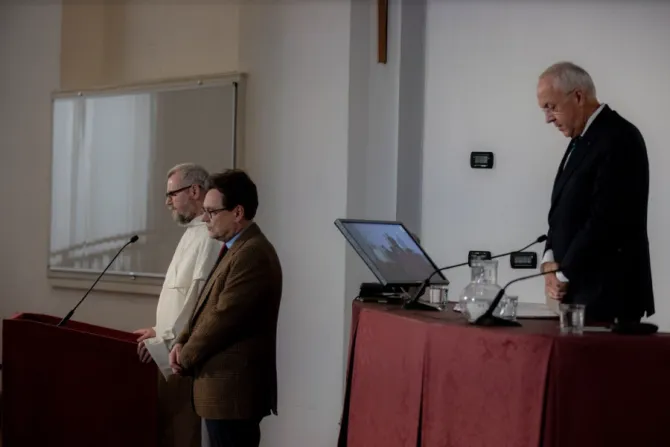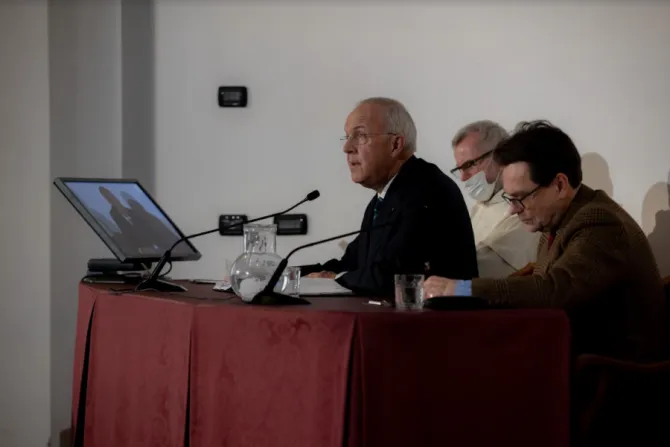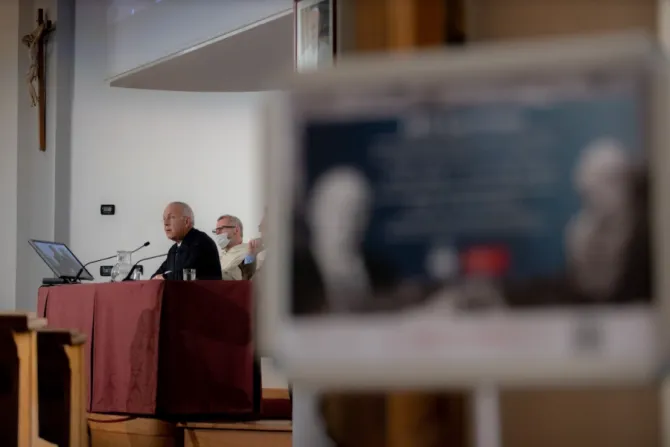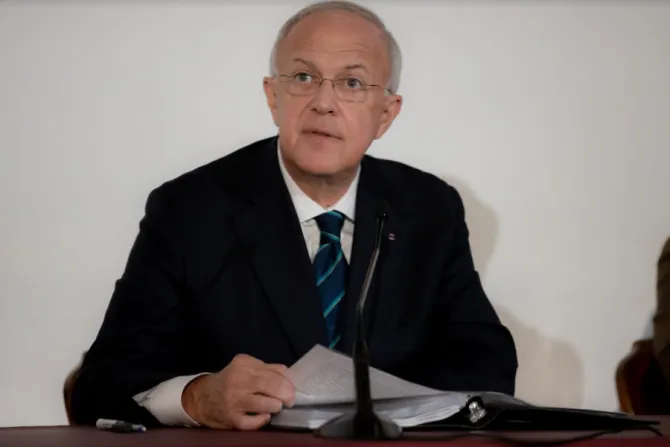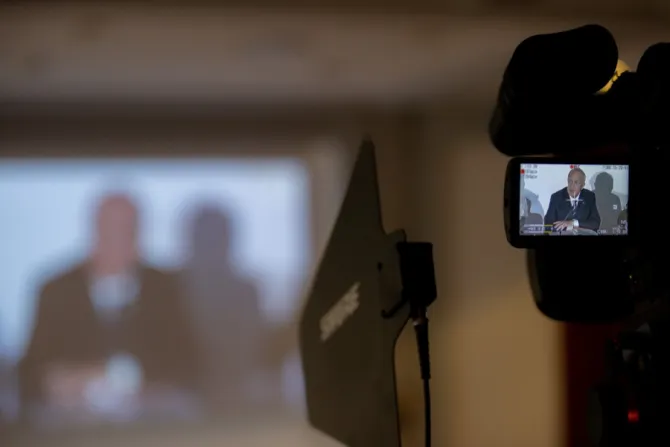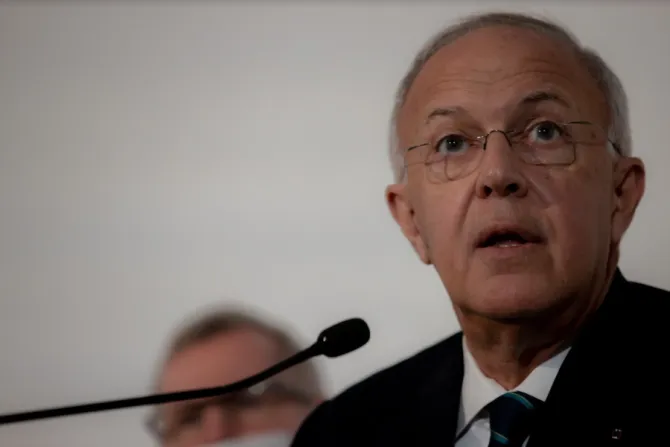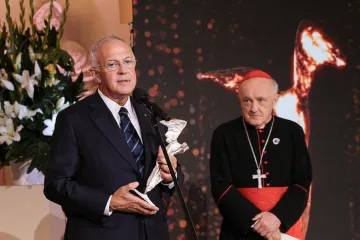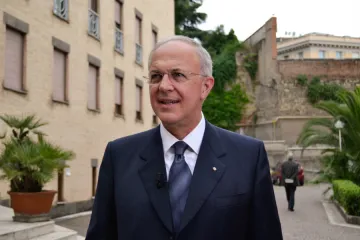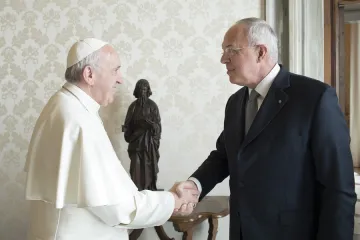Rome Newsroom, Mar 17, 2022 / 13:00 pm
The Christian heritage of the West cannot be preserved by looking backward, but only by looking forward and building “an authentic culture of Christian witness,” the former head of the Knights of Columbus said on Thursday in a lecture in Rome.
“The Church does indeed hold within herself the future of the world and that future depends in so many ways on the degree to which each of us can build an authentic culture of Christian witness,” Carl Anderson said on March 17.
Speaking at the Pontifical University of St. Thomas Aquinas, known also as the Angelicum, Anderson delivered a lecture for the St. John Paul II Institute of Culture in the aula of the Polish pope’s alma mater.
The former Supreme Knight of the Knights of Columbus said that while it is still important to “resist efforts to cancel two millennia of Christianity in the West,” now is also the time to look ahead to how Christianity can be “reintroduced” to secular societies.
“The Christian heritage of the West cannot be preserved by looking backward. It can only be preserved by looking forward,” Anderson said.
“Pope John Paul II saw the issue clearly when he challenged us to ‘Open wide the doors for Christ. To his saving power, open the boundaries of States, economic and political systems, the vast fields of culture, civilization, and development.’”
Anderson cited Larry Chapp, a retired professor of theology, who argued that “the Church in the West has made a ‘settlement’ with bourgeois, liberal modernity, creating a form of Catholicism that is boring (and) does not attract.”
“He contends that only a radical living of the Gospel, as seen in the life of individuals such as Dorothy Day, for example, ‘will suffice as a response to the unique challenges of liberal modernity.’”
Anderson, who served as Supreme Knight from 2000 to 2021, added: “My experience in leading more than 2 million members of the Knights of Columbus and their families tells me that regarding a life of Christian witness, the harvest may be more plentiful than we know. The problem may not be so much that the workers are few, but that we have called so few to come forward to lead such lives.”
He added that he believed that what was needed was to provide “structure, formation, guidance, empowerment, and opportunity to the laity, especially at the parish level.”
“And most importantly calling our fellow Catholics to a better understanding of the Christian state of life, the vocation of the laity, and the call to discipleship,” he said.
Beauty and transcendence
In his live-streamed lecture, Anderson also addressed the observation of the political philosopher Charles Taylor, who wrote that human beings now live in an age where an entire population has “managed to experience (their) world entirely as immanent.”
He noted that Joseph Ratzinger, who was a well-known theologian before he was elected pope and took the name Benedict XVI, noticed something similar.
He wrote: “It has been asserted that our century is characterized by an entirely new phenomenon: the appearance of people incapable of relating to God. As a result of spiritual and social developments, it is said, we have reached the stage where a kind of person has developed in whom there is no longer any starting point for the knowledge of God.”
In the face of this problem, Anderson said that the issue becomes “how to introduce a sense of transcendence.”
(Story continues below)
“Historically, this has been a function of art,” he noted.
“I think this is our situation today. After decades of static imagery and styles influenced by secular culture, it is time this secular matrix is broken by Christian artists with a coherent theological vision,” he said.
Anderson highlighted the work of the Slovenian artist Father Marko Ivan Rupnik, S.J., and his community of artists in Rome at Centro Aletti, who designed the Redemptor Hominis Church at the Saint John Paul II National Shrine in Washington, D.C., along with many other churches.
He quoted St. Augustine, who wrote: “everything beautiful comes from the highest beauty, which is God.”
“Writing in Communio, David C. Schindler has asserted that ‘beauty is not accidental to religion but an inevitable expression thereof: the divine cannot enter into the physical differentiation of matter in time and space without thereby revealing its meaning-conferring unity, which is to say, without causing that matter to radiate forth a beauty that transcends it,’” he said.
The power of witness
Anderson also praised the work of the American film director Terrence Malick, who, he said, “has succeeded in introducing a spiritual and transcendent style into a contemporary artistic medium that opens an access to mystery and the sacred.”
Malick’s film, “A Hidden Life,” released in 2019, tells the story of Blessed Franz Jägerstätter, the martyr who was executed in 1943 by the Nazis for refusing military service.
“A farmer, parish sacristan, and Third Order Franciscan, Jägerstätter had numerous opportunities to avoid martyrdom, yet he refused to participate in military service for the Third Reich that required him to take the oath of allegiance to Hitler — all of which he considered a modern form of paganism,” Anderson said.
“Some months before his execution, Jägerstätter wrote, ‘What is demanded of us Christians today? … Wouldn’t it be worthwhile to learn from the lives of the saints so that we would know how the first Christians would have responded to today’s evil commands?’”
Anderson said that Christian witness provides a profound response to the horrors of the 20th century’s tragic history, as is also seen in the lives of St. Edith Stein and St. Maximilian Kolbe, who were “spiritual lights” in the darkness of Auschwitz.
“We are a pilgrim Church, and the implications of this reality are many. But surely one implication is that we remain faithful to our fellow pilgrims along the way — to keep faith especially with those who have given their lives in places like Auschwitz, Aleppo, Nineveh, and now Kyiv,” he said.
Noting that John Paul II called Kolbe “the patron of our difficult century,” Anderson suggested that Kolbe, Stein, and Jägerstätter could be considered “patrons of Christian witness in our century.”
Anderson also recalled that in the last hours of St. John Paul II’s life, thousands of young people gathered in St. Peter’s Square to pray.
When told of their presence, the pope who initiated the first World Youth Days reportedly said: “I have looked for you. Now you have come to me, and I thank you.”
“This final encounter between young Christians and John Paul II, as well as the remarkable history of World Youth Days, testifies to the expectation of a new generation’s desire for experience of the sacred and spiritual depth, but also for the opportunity of Christian witness,” Anderson said.
“In reflecting on this during his homily for the inauguration of his own pontificate, Pope Benedict XVI, said, ‘it became wonderfully evident to us that the Church is alive. And the Church is young. She holds within herself the future of the world and therefore shows each of us the way towards the future.’”


